
Verdon Gorge is one of those places where nature has created a true masterpiece that is untouched by time. It captivates with its scale, colour and harmony: the turquoise Verdon River slices through the limestone cliffs of Provence, forming a grand natural amphitheatre considered one of the most impressive in all of Europe. When you stand on the edge of this canyon, it feels as if the earth itself is breathing — that is how powerful and majestic it appears. It is no coincidence that it is called the “Canyon of Europe” — in its beauty it can compete even with the famous Grand Canyon.
Located in the very heart of southern Provence, the Verdon Gorge is not just a tourist spot, but a world of its own, with its own rhythm, colour and sound. Here you feel calm and awe at the same time: the cry of an eagle somewhere above your head, the rustle of the wind in the mountain pines, the echo of waves touching the rock walls. This land is an ideal destination for those who seek active holidays with soul: you can set off on a hike along the river, glide by kayak over turquoise waters or drive along the panoramic Verdon roads, discovering views that literally take your breath away. And at that moment you realise — beauty does not need words, it simply exists.
There is no artificial glamour of big resorts here — only the pristine beauty of nature, harmoniously blended with French charm. Small villages are scattered along the gorge, where time seems to have stopped: narrow stone streets, the scent of lavender, the chime of church bells and cosy cafés inviting you to rest after long walks. And nearby you will find comfortable Verdon campsites, from which you can set off on sunrise walks or watch the sun go down, when the rocks turn golden and the river becomes a mirror of the sky.
Verdon Gorge in France is a place that awakens all the senses. It inspires photographers, enchants travellers, gives energy to artists and peace to those who are looking for silence. It is one of those corners of Europe where you want to stay longer than you planned — just to watch the sun slip behind the edge of the canyon once again and feel that the world is still beautiful in its wild, untamed state. When you stand there, on the edge, it feels as if you are touching the clouds, and your heart involuntarily tightens at the sense of your own smallness before the power of nature.
The Verdon Canyon is not just beautiful — it is alive. Every glint of light on the rocks, every shade of the water and every rustle of grass under your feet creates a special melody of a place that you remember forever. This is not a destination for “just another trip”, but a journey that changes the way you see the world. And that is why those who have been here at least once say: people do not simply visit Verdon — they come back to it.
The history of the Verdon Gorge — a journey through millennia
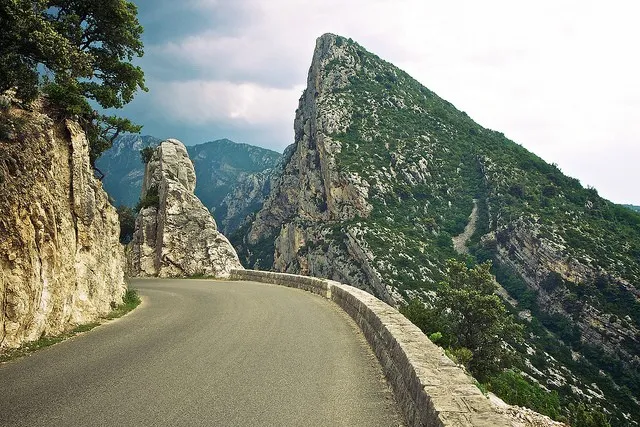
The Verdon Gorge is not just a natural wonder of France, but the result of millions of years of work by water, wind and time. Around 200 million years ago, where the present-day canyon in Provence lies, there was a warm sea where shell deposits and limestone sediments accumulated. Later, when the water receded, tectonic movements lifted these layers, and the Verdon River, fed by a powerful flow from the Alps, began to carve through the rock, creating the Verdon Gorge that we see today.
Back in the distant Middle Ages, this area was considered wild, even mystical. Dense forests, sheer cliffs and the roar of the water created the impression that spirits of nature lived here. Locals fearfully told legends about the valley of winds and shadows — a place where the sun sets earlier and the day seems shorter. People believed that the depths of the gorge concealed not only the river, but also the secrets of past civilisations. Because of the difficult terrain and lack of roads, even shepherds did not venture here: for them, Verdon was a boundary between the familiar world and the unknown.
It was only in the 19th century that the situation changed. The Romantic era sparked interest in wild nature, and bold travellers began exploring this “blank spot” on the map of Provence. Scientists, artists and geographers set off on expeditions, tackling the inaccessible slopes to peer into the very heart of the canyon. Among them was Édouard-Alfred Martel, a prominent French geographer and speleologist who in 1905 was the first to systematically study the gorge. His description included precise measurements of its depth and width, as well as hydrological observations. Martel called Verdon “one of the most monumental natural creations in Europe” and predicted that one day thousands of people would come here to see this extraordinary landscape.
After his research was published, the canyon began to attract scientific expeditions, photographers and journalists. In the 1920s, the first tourists rode down to the river on horses and donkeys, and in the 1930s the first attempts at organised excursions began. Since then, Verdon has gradually transformed from a “forgotten land” into a symbol of the wild beauty of Provence. Today it remains just as awe-inspiring — except that instead of torches, travellers hold cameras in their hands, and instead of tales of spirits, they tell stories about the power of nature that bows to no one.
A symbol of France and the pride of Provence
For the French, this picturesque Verdon Canyon is not just a tourist attraction, but a national treasure that has held the status of a regional natural park since 1997. The gorge has become a source of inspiration for artists, writers and film directors. In the 20th century, documentaries were filmed here, and today it appears in commercials, travel shows and even scenes from feature films. Every year, over a million people visit the Provence canyon, and each of them leaves a piece of their admiration here. Yet despite its popularity, the Verdon Gorge in France has not lost its wild grandeur, remaining a space where nature still speaks in its own voice.
The history of Verdon is a story of the power of nature, which creates without haste but with perfect precision. Here every metre of rock is a page in a geological book that you can “read” with your eyes, standing on the edge of the abyss and feeling eternity breathing beside you.
Natural and geographical features of the Verdon Gorge
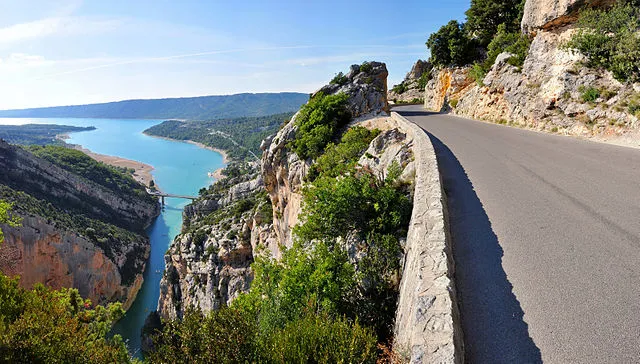
The limestone cliffs of Provence, which shape this breathtaking French canyon, are considered one of the most majestic natural formations in Europe. Their white rock gleams in the sun, contrasting with the turquoise waters of the river, and changes colour depending on the time of day — from silvery grey at dawn to warm golden hues at dusk. According to geological data, these cliffs formed over 200 million years ago, when an ancient tropical sea lapped where modern Provence now lies. Gradually, the seabed turned into layers of limestone, which were later pushed upwards by tectonic processes and became the foundation of the future canyon.
The length of the Verdon Gorge reaches around 25 kilometres, and in some places its depth exceeds 700 metres — that is higher than the Eiffel Tower. Locals call it “the stone heart of Provence”, as this natural rift divides two départements — Var and Alpes-de-Haute-Provence. Its shape is not symmetrical: in some sections the canyon is narrow and steep, while in others it opens out wide with terraces descending towards the water. Such diversity of relief makes it unique among all European canyons.
The turquoise Verdon River begins high in the French Alps, near the Col d’Allos pass, at an altitude of more than 2,500 metres above sea level. Its course is a story of the struggle of the elements: for thousands of years, water has chiselled its way through the limestone cliffs, creating one of the most striking mountain landscapes in France. The river flows from the north-east to the south-west, collecting numerous tributaries before flowing into the majestic Lake Sainte-Croix, the emerald jewel of this region. It is here that the river takes on its famous turquoise colour, which has become the calling card of the entire area.
This shade is not just a visual effect: it appears thanks to microscopic limestone particles suspended in the water. In the sunlight they scatter the rays, creating the illusion that the water glows from within. Because of this, the Verdon Canyon is often called the “place where water carries its own light”. When you stand on one of the viewpoints and look down, it seems as though the river is flowing straight through the sky. This combination of rock, light and water is a true lesson in harmony, gifted by the nature of Provence.
Climate and seasonality
The climate in this region is Mediterranean, with warm, sunny summers and cool winters. From June to August, air temperatures reach +28–30°C, and the water in the Verdon is about +22°C, so swimming in the Verdon Gorge is a real pleasure. In spring and autumn, those who seek peace come here — there are fewer tourists and nature is wonderfully vivid: blooming meadows, the scent of sun-warmed lavender and crystal-clear air. Winter reveals a completely different face of the canyon — tranquil, restrained and majestic.
Panoramic roads and the best viewpoints
For drivers there are several panoramic roads in Verdon that allow you to see the gorge from different sides. The most famous are the Route des Crêtes and the Corniche Sublime. The former runs past dozens of viewpoints with stunning views of the Provence canyon, the river and nearby villages. The latter road descends closer to the water, letting you stop at beaches and picnic spots. It is an ideal tourist route for those who want to experience the beauty of Verdon without rushing, pausing at the most scenic points.
- Length of the gorge: about 25 km
- Maximum depth: over 700 m
- Width in the upper part: up to 1,500 m
- River: Verdon, a tributary of the Durance
- Best season to visit: May–October
The canyon in France is a place where every metre of space is filled with beauty. Verdon combines calm and grandeur, harmony of colours and forms, the power of water and the silence of the mountains. It is not merely a geographical location — it is the embodiment of the very essence of Provence, its nature, light and soul.
Quick guide for travellers: what to know before your trip

The gorge in Provence is a destination worth visiting not on a whim, but with a thought-out plan. Despite its popularity among tourists, the gorge has preserved its wild charm, so a trip here feels like a real adventure. Located in south-eastern France, between the départements of Var and Alpes-de-Haute-Provence, it lies far from major motorways, among Alpine mountains that have retained the spirit of old Provence. The most convenient places to start exploring the canyon are the towns of Moustiers-Sainte-Marie, Castellane or Aiguines — they are considered the gateways to Verdon.
You can get here in several ways. The most convenient is by car, as this gives you the freedom to stop at the numerous viewpoints along the panoramic Verdon roads, such as the Route des Crêtes or Corniche Sublime. These routes allow you to see the gorge from different angles — from above, from the rim, or almost at water level. Buses run here from Nice and Marseille to Castellane, but beyond that the road winds along narrow hairpin bends, so travellers often use rental cars or eco-transport that operates within the Verdon Regional Natural Park.
To really feel the atmosphere of the canyon, it is worth setting aside at least two days. On the first day, discover the Verdon viewpoints, sense the scale of the gorge and make a few stops by Lake Sainte-Croix. The second day is best devoted to Verdon hiking trails, such as the famous Blanc-Martel or Imbut paths, which run along the river and reveal French waterfalls, caves and wild corners that you cannot reach by car. These are not just walks but real journeys through the heart of Provence, where a new landscape opens up at every step.
The best time to visit is from May to October. During this period, Verdon water activities are especially popular: kayaking, paddleboarding, swimming in the turquoise water, rafting or simply strolling along the shore. Spring and early autumn are perfect for hiking — the air is fresh and there are fewer tourists. In winter, the canyon becomes particularly quiet: the sun sets earlier, the cliffs are wrapped in a light haze, and it feels as though time slows down here.
Fascinating facts and legends of the Verdon Gorge
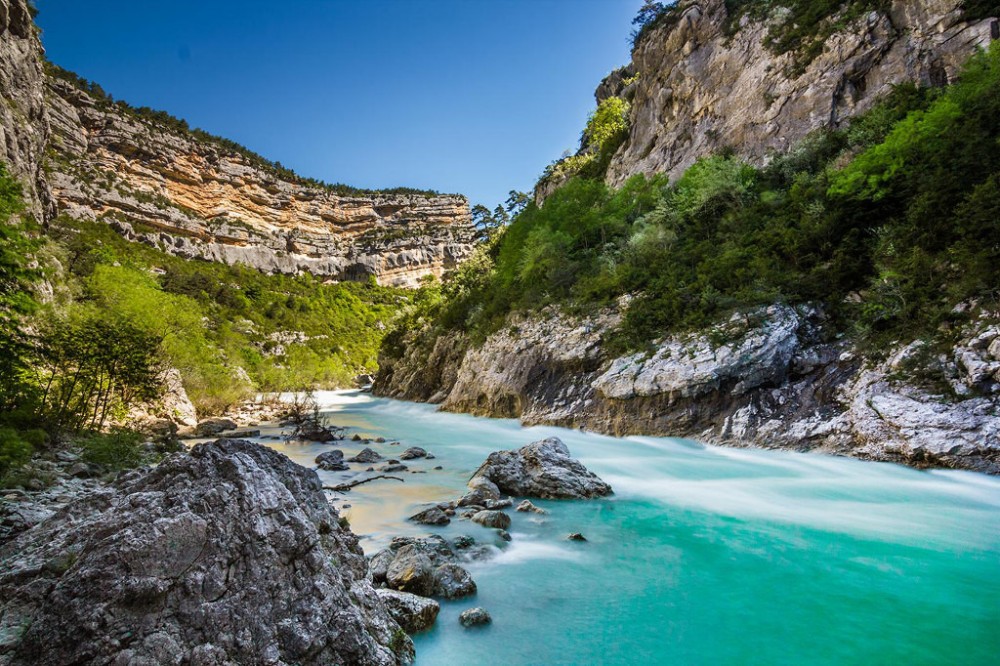
The Verdon Regional Natural Park is not only a geographical landmark of France, but an entire world filled with myths, legends and indescribable beauty. It has its own energy — calm yet powerful, like a heart beating deep within the earth. When you stand on the edge of the precipice, it feels as though time stops and all that remains around you is space, wind and the sound of water. The Verdon River flows along the bottom of the gorge like a living organism: at times calm and mirror-like, then suddenly erupting into powerful rapids, reminding you that here nature is the true master.
Locals say that if you hold your breath and listen carefully, you can hear how “the rock sings”. This is not just a metaphor — winds circling between the canyon walls create a hum similar to music. In ancient times, people believed it was the voices of the mountain spirits guarding the canyon. And when mist appears above the river, it seems as if these ancient spirits are once again rising from the water to see whether people have forgotten to respect nature.
Legends of Provence: spirits of wind and water
According to old legends, the gorge in Provence was created by a giant who was searching for a source of pure water to revive land exhausted by drought. When he split the rock with his staff, a mighty wave burst from the crack — this is how the turquoise Verdon River was born. They say that ever since then, its water has remained crystal-clear and pure, carrying the power of a primordial element. Every stone and every current is a trace of his steps frozen in time.
Other tales speak of the spirit of the river — an ancient guardian known as Verdon. He appeared to people in the form of an old man with a beard of foam and eyes the colour of water. According to legend, he protected this land from fires and storms, but strictly punished those who dared to harm nature. If someone cut down trees along the banks or threw rubbish into the river, the spirit would raise the wind, whip up the waves and wash it all back into the valley. This story was passed down from generation to generation, reminding people that Verdon is not just a river, but a living being.
Facts that fire the imagination
In its scale, the gorge in Provence is often compared to the Grand Canyon in the USA, although that one is much larger. The uniqueness of the French canyon lies in its colours and accessibility. That is why it is called the “European Canyon”. Its depth is impressive too: over 700 metres — almost twice the height of the Eiffel Tower! And thanks to the mild Mediterranean climate, comfortable temperatures for walking are maintained here all year round.
Interestingly, the limestone formations of Provence are not just rock. They preserve traces of marine shells, corals and even the bones of ancient sea creatures, as the sea once washed over this area. Some scientists consider the gorge to be a natural laboratory where you can “read” the history of the Earth in its geological layers.
Curious details for travellers
- The name “Verdon” comes from the Old French word “verd”, meaning “green” — a reference to the colour of the water.
- The gorge is visited by over 1.5 million tourists every year, most of them in summer.
- The canyon is home to more than 20 species of bats and over 150 species of birds, including eagles and vultures.
- International climbing and rafting festivals are regularly held here.
- Some sections of the canyon have natural acoustics — musicians sometimes perform mini-concerts right among the rocks.
When you stand on the edge of the gorge in Provence and look down, you realise that in front of you is not just a landscape — it is a living organism. You feel its breath in the wind and its pulse in the sound of the river. Verdon does not tell its story in words — it speaks through feelings. And everyone who has been here at least once remembers forever this melody of silence echoing between the cliffs.
What to see and do in the Verdon Gorge

The mountain slopes of the Provençal landscape are a real paradise for nature lovers, outdoor enthusiasts and fans of spectacular views. There is no need to rush here: every bend in the road reveals a new scene, every descent to the water brings a different feeling of peace. This corner of Provence is suitable for everyone — from experienced travellers to families with children. It is enough to step off the main tourist path, and you find yourself in a world where time flows as calmly as the Verdon River.
Water activities in Verdon
It is impossible to visit the gorge in Provence and not get into the water. The turquoise Verdon River attracts thousands of travellers in search of coolness, tranquillity and a sense of oneness with nature. On the main body of water in the area, dozens of rental centres offer boats, canoes, kayaks and SUP boards. Gliding between the limestone massifs, you can feel how rock and water “talk” to each other: each stroke of the paddle echoes through the cliffs with a soft, deep sound.
Paddling among the rocks, with only the buzz of cicadas and the calls of swallows breaking the silence, is a true meditation. Some visitors like to take a basket with cheese and wine and have a small picnic right on the water, in the shade of the mountains. In summer, the water warms up to 24°C, so swimming in the Verdon Gorge is safe and wonderfully pleasant even for children. It is especially magical to swim in the morning, when the surface of the river is still smooth and the sun is only just touching the tops of the cliffs.
Those who love adrenaline choose white-water descents (rafting) along the upper course of the river, where the water is faster and more energetic. Here you can feel a real rush as the waves splash over the boat and the current carries you through narrow canyon passages. Instructors are available for beginners: they help you navigate the route safely and teach basic paddling techniques. Among the popular starting points are the villages of Castellane and Pont-du-Soleil, from where the most exciting water tours begin.
Panoramic Verdon roads
For those travelling by car, two legendary routes are a must: the Route des Crêtes and the Corniche Sublime. They embrace the Verdon river canyon with their twists and turns, revealing new horizons to travellers after every bend. These roads are not just ways to get around, but a true open-air gallery of nature, where every kilometre makes you want to stop to take photos or simply breathe in the mountain air scented with lavender and pine.
Along the limestone canyon of Provence there are more than 14 viewpoints from which you can see both the bottom of the gorge and the bird’s-eye flights of eagles soaring above the cliffs. At some spots it feels as if you are standing on the edge of the world — that is how vast the panoramas are. This route is particularly popular with photographers, as in the morning the mist sinks right into the gorge, while in the evening the cliffs light up with the warm glow of Provence.
The best time to drive these roads is at sunrise or sunset. At these hours, the colours of nature become especially rich: the sky turns softly pink, the water vivid turquoise and the rocks golden. It is worth stopping on one of the terraces just to sit, listen to the wind whispering through the grass and feel the noise of the world fade away. The panoramic roads of the Verdon Canyon are not just a route, but a journey into harmony between sky, earth and water.
Verdon campsites and family holidays
Camping areas in Verdon are located along the banks of the river and lakes. Many of them have their own beaches, kitchens, children’s zones and even small cafés. This is a great option for those who want to combine comfort with closeness to nature. In the evenings, lanterns are lit above the water, the smell of fresh pastries drifts in from the nearest village, and it feels as if time flows more slowly here.
If you want to diversify your active holiday, go for a bike ride along the Canyon of Europe. The road winds between pines and lavender-covered slopes, and each bend opens a new view of the majesty of the Verdon Regional Natural Park — a stone kingdom where silence has its own voice. The air here is crystal-clear and the horizons so close that it seems you could reach out and touch them.
When the sun begins to set, it is the perfect moment to take a boat out onto the water. Fishing or a leisurely boat trip among the reflections of light on the turquoise surface creates memories that last a lifetime. And if your soul longs for romance, take a blanket and a basket with wine and fruit and have a picnic on the banks of the turquoise Verdon River. When the sky slowly turns pink above the Alpine peaks, it feels as if the whole world pauses just to let you enjoy this moment of harmony.
What to see near the Verdon Gorge
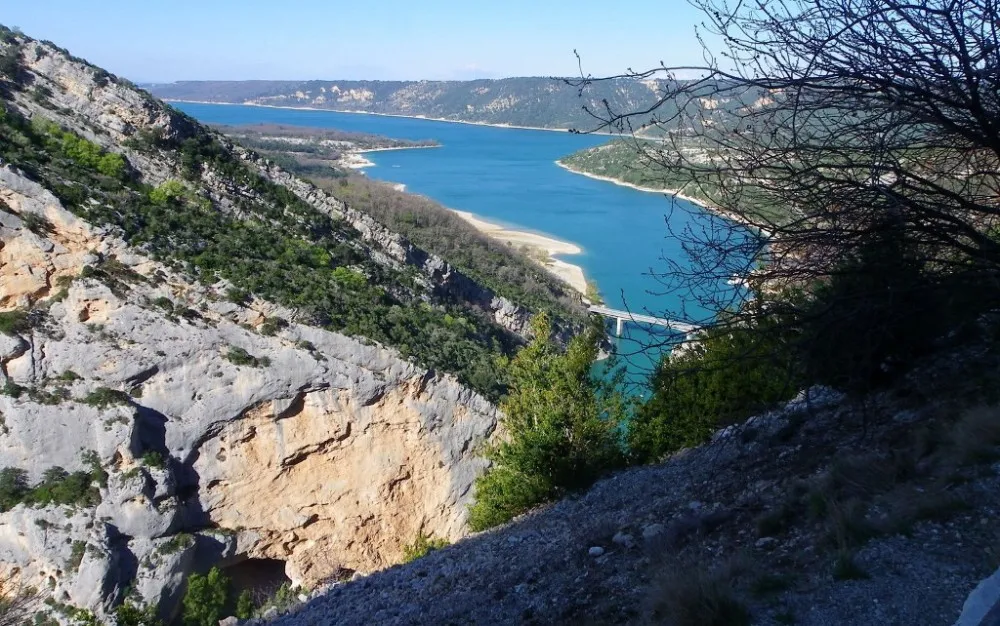
The Verdon Canyon is the heart of Provence, but around it there are dozens of places that deserve just as much attention. They complement the impressions of the canyon, allowing you to see the region from different angles — from medieval villages to natural wonders. Here every kilometre is a new story, a new fragrance and a new feeling.
They say that in Provence even the GPS has its own character: it does not always lead you exactly where you planned, but always takes you somewhere beautiful. And indeed, as soon as you leave the main road, another world begins — quiet villages with stone houses, vineyards where the owners bring out glasses of wine right to the roadside and lavender that seems to bloom at the very smile of the sun.
Locals joke that Verdon has three main aromas: lavender romance, cheesy temptation and petrol from tourists who cannot tear themselves away from the panoramas. But this scent of adventure only adds to the charm! Even coffee is served differently here: with a view, a smile and a little story from the barista who can easily prove that his village is the most beautiful in all of France. “And here, monsieur, even the goats admire the canyon!” he says — and you believe him, because you see a goat standing on the rock like a tourist with a selfie stick.
So while travelling around the Verdon Gorge, do not rush. Allow yourself to stray from the route, stop by a vineyard, talk to locals — they will happily tell you where to find the best wine, the tastiest baguette and the most romantic sunset. In Provence even chance encounters taste like life itself — slightly salty from sweat, sweet from lavender and crunchy like a fresh croissant.
Picturesque villages of Provence
First on the list should be Moustiers-Sainte-Marie — a village often called one of the most beautiful in France. It seems to hang between two cliffs, and its narrow streets are decorated with clay pots, lavender and little artisan shops. This is the place to buy the famous “faïence de Moustiers” ceramics, known around the world.
No less charming is the village of Castellane, the gateway to the gorge in Provence. Its streets preserve the spirit of old France, and from the top of the rock crowned by the Notre-Dame-du-Roc chapel there is a panoramic view over the entire canyon. Here you can enjoy a coffee overlooking the valley or taste local goat’s cheese made according to age-old recipes.
Lakes and natural landmarks of Provence
Next to the canyon lies Lake Sainte-Croix, one of the most beautiful lakes in France. Its calm, turquoise water contrasts with the mountain scenery, creating an ideal spot for swimming, kayaking or simply relaxing on the beach. On hot days, even locals come here to escape the sun under the branches of plane trees.
Nature lovers should not miss the Plateau de Valensole, a symbol of Provence. From June to August, endless lavender fields bloom here, turning the landscape into a true watercolour painting. The scent of lavender is so strong that you can smell it even on the way to the fields. It is a dream location for photographers, romantics and everyone who wants to see Provence at its softest and most delicate.
Tourist infrastructure in the Verdon Gorge
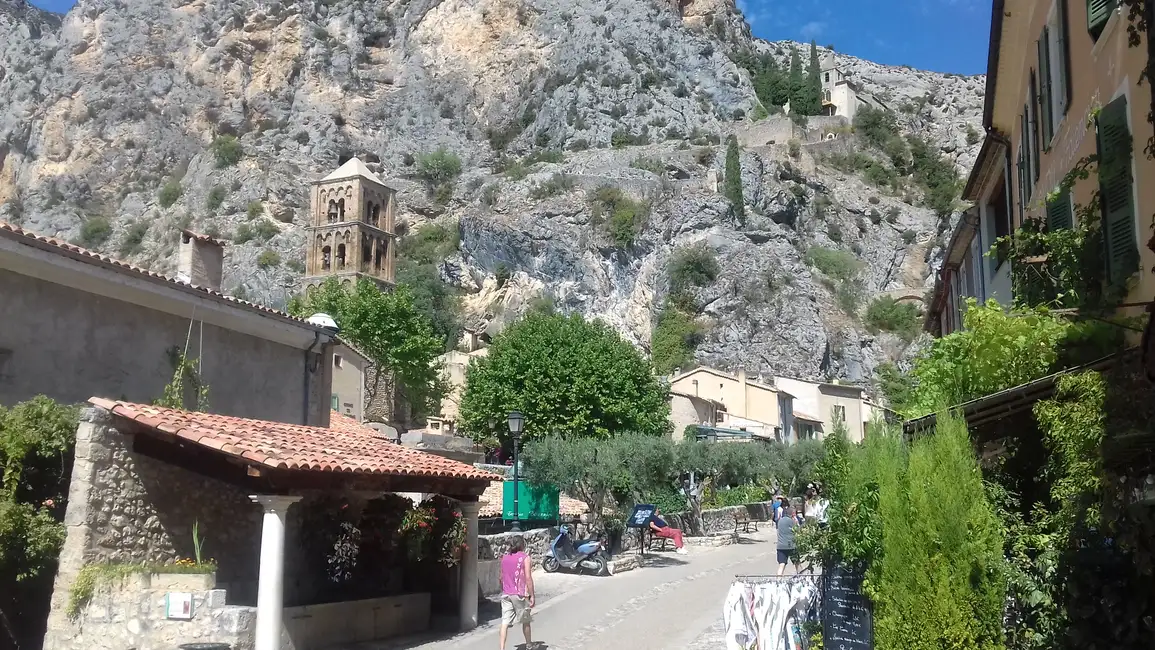
The limestone canyon of Provence is not only a natural wonder, but also a perfectly organised tourist region of France, where comfort blends harmoniously with wild beauty. Whether you are travelling with a tent or are looking for a cosy hotel with a view of the turquoise Verdon River, you will find everything here for an unforgettable holiday.
This combination is the main secret of Verdon. On one side — the silence and grandeur of nature that goes straight to the heart, on the other — the conveniences of modern travel, thought out to the smallest detail. You can have breakfast with a croissant on a balcony overlooking the canyon and an hour later be down by the water, ready to set off on a boat trip. In the evenings, accordions play in the little villages, the air smells of fresh pastries and lavender, and all of Provence seems like one big postcard from life, where time flows more slowly.
For every traveller this region offers something special: for romantics — quiet evenings by Lake Sainte-Croix, for active visitors — hikes and rafting, for photographers — light that changes the shades of the cliffs every hour. And for those who seek balance, Verdon becomes the place where they finally manage to catch that perfect point between adventure and peace. Locals joke: “Even the stones here take beautiful holidays” — and looking at the landscape, you have no doubt that it is true.
Where to stay
Along the entire stretch of the gorge in Provence, there are dozens of accommodation options — from family campsites to elegant boutique hotels. In the villages of Moustiers-Sainte-Marie, Castellane and Saint-Michel-du-Verdon, you will find guesthouses with homemade breakfasts, where the hosts spoil you with lavender honey and tell you where to find the best viewpoints. For those who love silence, there are glamping sites and chalets among the pines with views over Lake Sainte-Croix.
Each hotel has its own character: somewhere you are greeted by an old dog at the doorstep, somewhere by the smell of freshly baked croissants, and in some places the landlady herself brings fragrant coffee with cinnamon to your table and asks whether you got lost on the Route des Crêtes. French hospitality in Verdon is not just about service — it is a warm smile and a shared sense of calm and love for this land.
There are also options for romantics — stone cottages where, in the evenings, the only sounds are crickets and the soft rustling of the wind in the vineyards. And for those travelling with children, the Verdon campsites are ideal — with swimming pools, play areas and open-air barbecues. Under the starry sky of Provence, evenings are filled with the scents of pine, wine and freedom.
Local hoteliers like to joke: “We may not have five-star resorts, but we do have a million stars overhead”. And that is absolutely true. In Verdon, comfort is not measured by the number of pillows or the brand of shampoo, but by mornings that begin with sunshine, quiet and the feeling that you can finally breathe deeply.
Food and cafés
The French say: “A hungry tourist will not see the beauty, even in Provence” — and they are right. In the towns around the Canyon of Europe there are plenty of small restaurants and cafés serving dishes made to traditional recipes. Try ratatouille, local cheese baked with Provençal herbs and definitely a dessert with lavender honey. In the evenings, jazz floats over the terraces and a glass of chilled rosé is the perfect end to the day.
Each village has its own “secret” cuisine. In Moustiers-Sainte-Marie, you will be served the creamiest goat’s cheese with a drizzle of honey and olive oil; in Castellane — fragrant aïoli with seafood; and in Saint-Michel-du-Verdon — a homemade fig tart with a soft crust that the French call “a kiss of summer”. Even the bread here has its own character — crunchy, golden, baked in a stone oven, it smells of garlic, rosemary and sunshine.
And do not be surprised if the chef suddenly appears at your table with a smile and asks: “So, did you enjoy my Provence?”. In Verdon, cuisine is part of a life philosophy. Food does not just satisfy hunger, it brings people together. It is over dinner under the stars that you will feel the true rhythm of the south of France — unhurried, aromatic and warm. Every dish and every sip of wine is a little celebration in which flavours, landscapes and the kindness of locals come together.
Transport and routes
The easiest way to get to Verdon is by car — it gives you total freedom to explore the panoramic Verdon roads. For those travelling without a car, bus routes run from Nice, Digne-les-Bains and Marseille. In the summer season, guided tours to Verdon operate, covering the main viewpoints and including short Verdon hiking routes. For eco-minded travellers, there are bicycle and electric scooter rentals in villages near the lake.
The tourist infrastructure of Verdon is an example of how France knows how to combine comfort and nature. Everything here is designed so that you feel part of the landscape, not just a guest. Each day brings a new discovery, each dinner is a small celebration and every sunrise is another reason to fall in love with Provence all over again. The towering rock walls of the Verdon Canyon are waiting for you!
Safety, rules and tips for travellers in the Verdon Gorge
Verdon Park is a place where the beauty of nature goes hand in hand with its power. To ensure that your journey among the limestone massifs of Southern Provence leaves only good memories, it is worth knowing a few important tips. The cliffs are high, the paths are narrow and the river can be unpredictable, so respect for nature is not just a rule — it is the key to your safety.
Rules of behaviour in the Verdon Regional Natural Park
The Verdon Regional Natural Park protects a unique ecosystem. To preserve it for future generations, visitors are asked to follow simple but important rules. Do not leave the marked trails, do not drop litter, do not pick plants and do not feed wild animals. These may seem like small things, but they are exactly what helps nature remain unspoilt.
- Use only official Verdon hiking routes.
- It is forbidden to light fires outside designated areas.
- Do not leave plastic bottles or tissues — the canyon winds can carry them for kilometres.
- When swimming in the turquoise Verdon River, avoid areas with strong currents — they are unpredictable.
Tips for travellers
If you are planning an active holiday, it is best to start your routes in the morning — at this time the air is fresh and the sun still gentle. Take water, a hat, sunscreen and sturdy footwear. For hikes deep into the canyon, trekking poles are recommended — they help on both descents and ascents.
- The weather in Provence is changeable: always carry a light jacket or raincoat.
- In August, temperatures in the gorge can exceed 35°C — plan your walks for before midday.
- Mobile coverage is patchy in some areas, so download an offline map or GPS track.
- During water trips always wear a life jacket — even on short routes.
Driving on the roads
The panoramic roads of Verdon are narrow and winding, like the very history of Provence twisting between mountains and lavender fields. The French drive confidently but unhurriedly — they know that in Verdon the journey matters more than the destination. So do not try to overtake them — it is better to pull over at a viewpoint and allow yourself simply to be in the moment.
Each bend opens a new scene: a rock that looks like a giant’s face; an abyss where the sky is reflected; and the river below, twisting like a silver ribbon. Be especially careful on sections without barriers — here beauty comes with a touch of danger. Heights of more than 600 metres make your heart beat faster, but this very thrill is what makes the journey real.
Locals say these roads were made not for speed, but for reflection. If you see an elderly French cyclist along the way, do not be surprised — he may have ridden dozens of kilometres just for a cup of coffee with a view. That is the true spirit of Verdon: a place where every turn brings a small miracle and every stop a sense of harmony between sky and earth.
French humour and common sense
Local guides like to joke: “In Verdon there are two types of tourists — those who admire from the edge and those whom the rescuers pull back up”. So treat nature with respect, but without fear. The main thing here is to enjoy the moment and not to rush. In Provence even danger has its charm — it simply reminds you that beauty requires attention and a sensible approach.
By following these simple rules, you will be able to explore the Verdon Canyon safely and mindfully — with respect for nature, people and the journey itself. After all, the most valuable thing you can take away from Verdon is not a souvenir, but a sense of harmony, when the world suddenly seems both boundless and wonderfully simple.
Frequently asked questions about the Verdon Gorge
Where is the Verdon Gorge located?
Verdon Gorge is located in south-eastern France, in the Provence-Alpes-Côte d’Azur region. It stretches between the départements of Var and Alpes-de-Haute-Provence, not far from Lake Sainte-Croix.
How can you get to the Verdon Gorge without a car?
The easiest way to reach Verdon is from Marseille, Nice or Digne-les-Bains — buses run from these cities to the villages of Castellane, Moustiers-Sainte-Marie and Saint-Michel-du-Verdon. In season there are also organised guided tours and bike rentals for getting between locations.
Can you swim in the turquoise Verdon River?
Yes, swimming is allowed in calm areas near Lake Sainte-Croix. The water here is clean, refreshing and has that distinctive turquoise colour. However, you should avoid sections with strong currents, especially in the upper part of the gorge. Always pay attention to warning signs.
Which routes in Verdon are the most popular?
The best-known Verdon hiking routes are the Sentier Blanc-Martel (15 km along the gorge) and the Sentier de l’Imbut, which leads to picturesque natural grottos. For families, shorter trails around the lake or the village of Rougon are ideal.
Where are the best panoramic viewpoints for photos?
The best views open up from the Route des Crêtes (“Ridge Road”) — it has 14 viewpoints offering different angles on the gorge. It is also worth driving along the Corniche Sublime, which runs along the southern rim of the canyon.
Are there campsites in Verdon?
Yes, there are dozens of campsites along the gorge and around Lake Sainte-Croix: Camping Le Galetas, Camping Les Pins, La Source and many others. They offer barbecue areas, showers, electricity and even swimming pools. In high season it is best to book in advance.
Can you rent bicycles near the gorge?
Yes, in the villages of Sainte-Croix-du-Verdon and Moustiers-Sainte-Marie you will find bicycle and e-scooter rentals. It is a wonderful way to explore the Verdon panoramic roads without a car and enjoy the views at your own pace.
When is the best time to visit the canyon?
The best season is from May to October. Spring is ideal for hiking, summer for swimming and water activities, and autumn for tranquillity and warm colours. In winter most campsites are closed, but the scenery remains magical.
Where can you eat near the Verdon Gorge?
We recommend the café Le Styx in Castellane — with views of the canyon, the restaurant Les Tables du Cloître in Moustiers-Sainte-Marie for gourmets, and Café du Lac in Saint-Michel-du-Verdon for light snacks by the water.
Are there wild animals in Verdon?
Yes, the park is home to griffon vultures, eagles and even rare bat species. You can observe them from viewpoints or while hiking. But remember — this is their natural habitat, so do not get too close.
Why is the Verdon Gorge called the “Canyon of Europe”?
The Verdon Canyon is over 700 metres deep and about 25 km long, which makes it one of the largest in Europe. Its limestone cliffs and the turquoise Verdon River create a striking contrast that impresses even seasoned travellers.
Conclusion: Verdon Gorge — where nature speaks to the soul
Verdon Gorge is not just a canyon and not just a picturesque corner of France. It is a place where time slows down and your heart starts beating to the rhythm of nature. When you stand on the edge of a cliff and watch the turquoise Verdon River slowly flowing between limestone walls, you realise that in front of you is harmony shaped over thousands of years.
Everything here is authentic: the wind smells of lavender, the water reflects the sky and the silence has its own voice. The Canyon of Europe teaches you not to chase impressions — it simply reveals itself to those who are ready to see. And perhaps this is its main magic: you arrive here as a tourist, but you leave a little different — calmer, more grateful and happier.
On every trail and in every breath of this land there is a feeling that life flows differently here: without fuss, without haste but with a sense of fullness. And when you leave the Verdon Gorge, you take with you not only photos, but also a piece of that silence that is so hard to find in the modern world. The limestone ridges of the Southern Alps are not a final destination — they are a reminder that a true journey begins within us.
So if you are looking for a place where the earth touches the sky and the beauty of nature wins your heart — head to the Verdon Gorge. And remember: the best memories are born where you allow yourself simply to be.
A holiday in Verdon is a chance not only to gather your thoughts in harmony with nature, but also to discover a different France and different Alps — ones that are not limited to ski resorts like La Plagne or Les Arcs. Here France is different: quiet, heartfelt and real.
Come here at least once — and you will understand why Verdon is called the heart of Provence. Allow yourself to forget about time, breathe in the scent of lavender, watch the sun play on the turquoise water and simply feel that you are in the right place. Verdon is waiting for you — calm, warm and endlessly alive.


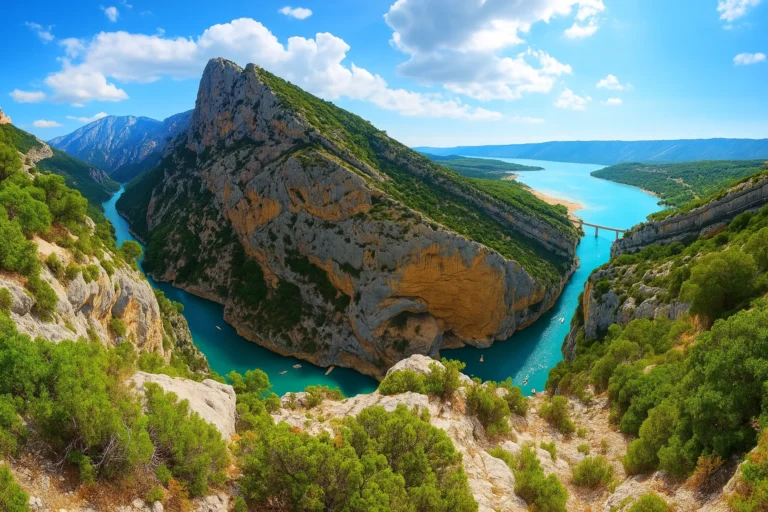
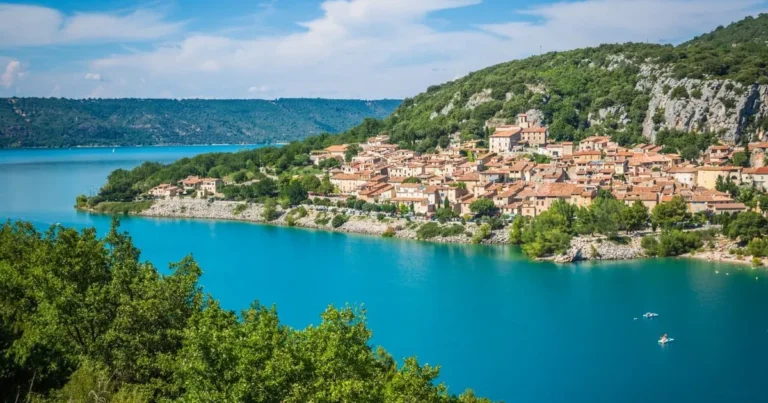
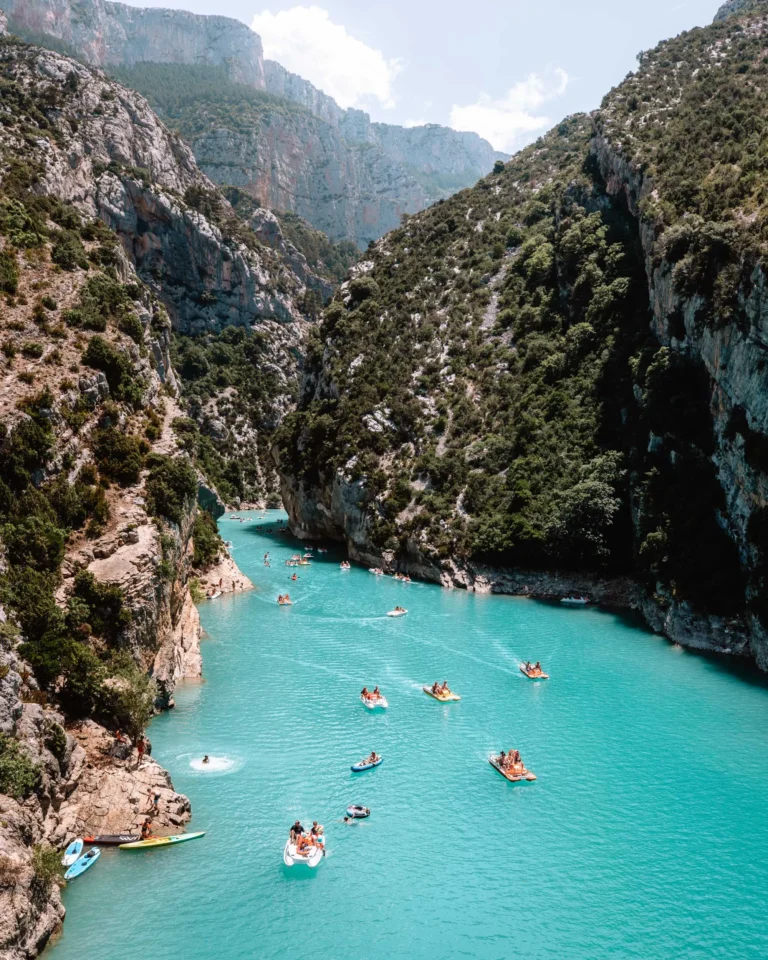

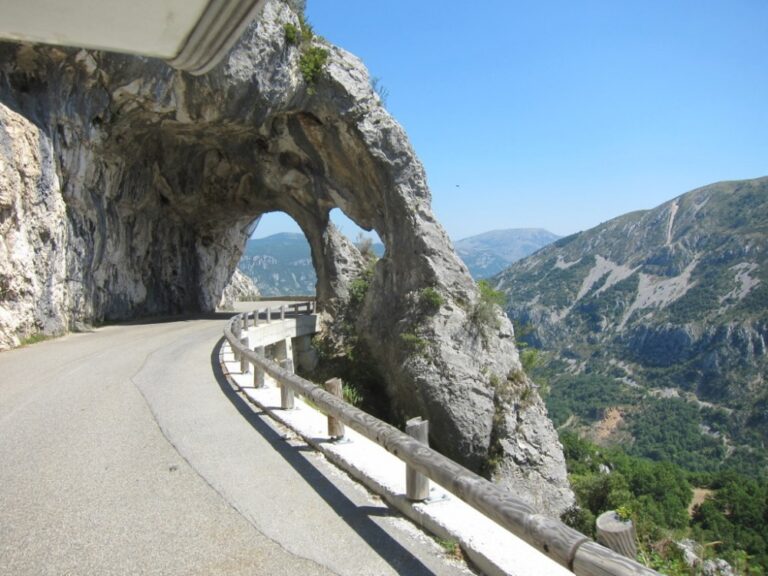
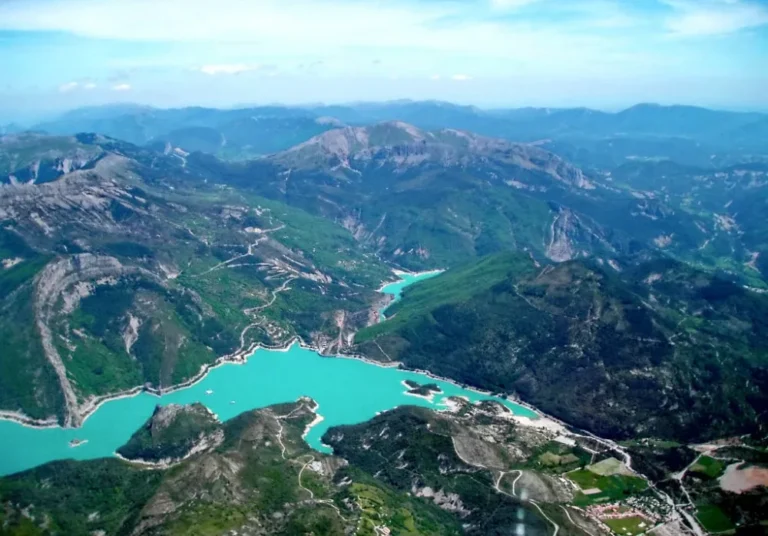


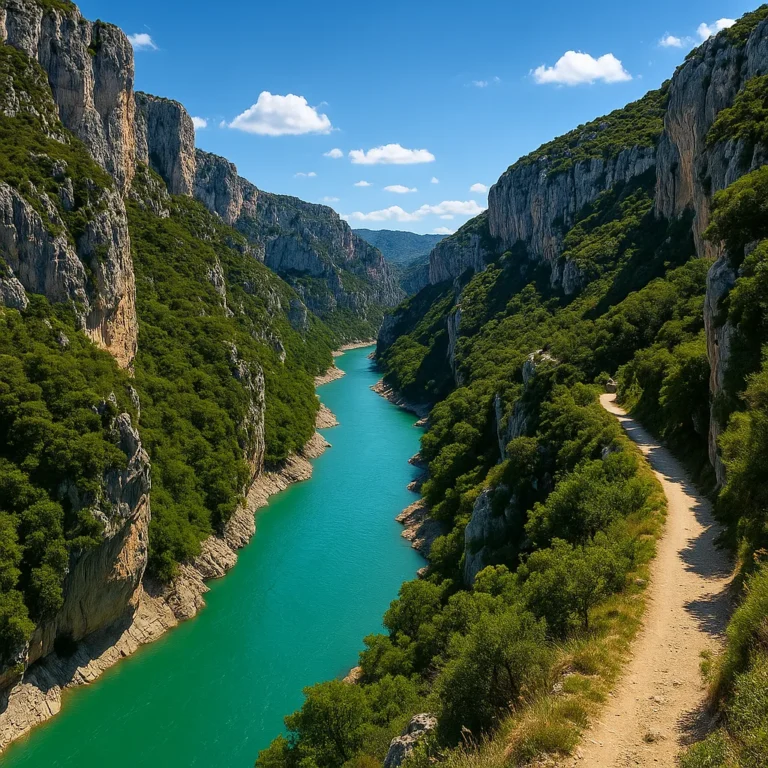

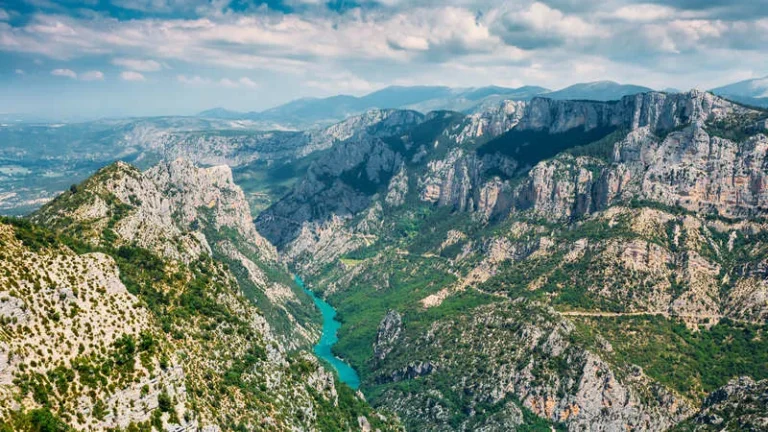

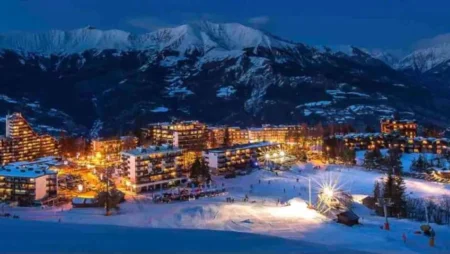
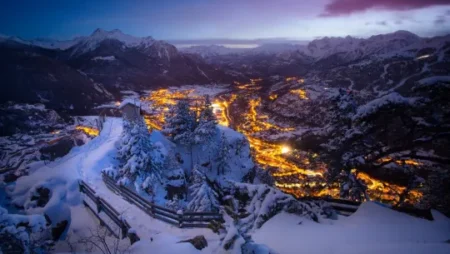
No Comment
You can post first response comment.